Throughout my years of enjoying the activity, I’ve learned a lot about what works and what doesn’t and would like to offer up the following pointers for anyone interested in this particular style.
Stumping types
I’ve identified three varieties of stump shooting:
- Recreational – stump shooting simply for the joy of doing so.
- Practical – stump shooting with a purpose, such as applying hunting techniques or testing your hunting gear afield.
- Small game hunting – a mixture of one and two, which basically means shooting stumps until you see a squirrel and decide shooting said squirrel would be a lot more productive.
All are equally rewarding in their own way, but each presents a different approach to your arrow setup.
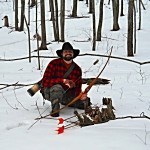
Match your arrow to the type of stumping
Those who enjoy reading about the golden years of traditional bowhunting in the United States most likely identify with the use of the .38 shell casing on a cedar shaft as the quintessential small game rig. This setup is still effective, but we’ve advanced quite a bit since then and there are other alternatives.
Let’s break them down in regards to the types mentioned above.
- Recreational – The opportunities are endless. Whatever flies well out of your bow is ample ammunition. If you are stumping for the sake of stumping, cast-offs and 2nds make great ammunition.
- Practical – shoot with what you hunt with. Match arrow length, spine, point weight, and fletching as accurately as possible. Your mind is a computer and it is memorizing your arrows flight. Changing things up creates a different flight pattern. Remember that.
- Small game hunting – you’ll most likely be shooting up into trees and “Flu Flu” fletching or full-length fletching would be advised to slow the arrow down or you’ll spend hours trying to find your arrows and will most likely return with an empty quiver.
Arrow materials
I’ve spent years in the field with wood, aluminum, and carbon shafts and can tell you that all three have their strengths and weaknesses.
- Wood is flexible and takes a hit extremely well. It doesn’t bury into the ground as easily as carbons or aluminums either. They’ll bend and need straightening, refinishing, refletching, and regluing from time to time though.
- Aluminum is very consistent from arrow-to-arrow and easily maintained. However, they are also easily bent and don’t bounce back to form like woods do. They are also easily lost as they have a tendency to slip through soft undergrowth.
- Carbon is the most durable of the three and can be made even more resilient by reinforcing both ends of the shaft with an aluminum footing. When carbons break it usually happens at either end – the point via a direct hit (seems to happen often with aftermarket brass inserts) or at the nock from deflection. Carbons are also the most expensive and losing them can make a grown man weep.
Selecting your point
There are a variety of small game points on the market that make extremely good stumpers:
- Standard Blunt – your everyday glue-on or screw-in flat-tipped point.
- Bladed Blunt – same as the standard but the head is made concave or blades are added to increase surface area, which prevents the arrow from penetrating too deeply into the target for easier retrieval.
- Rubber Blunt – large surface area and rubber cushion make these perfect for direct hits (great for aerial small game shooting as they will not penetrate a tree).
- Blunts with Spring-loaded Arms – arms protrude from the side of the point to catch grass and bark and prevent the arrow from penetrating. The Zwickey Judo point is the most popular and works very well in grassy fields.
What you choose is purely preference. I’ve had a healthy dose of each in my quiver and can tell you there are merits to using them all for different applications.
The type of fletching used should correlate with the kind of stumping you are enjoying. When practicing for hunting you should use fletching that is identical to your hunting arrows. When seeking small game or just roving for recreation, I recommend using Flus. Your arrows won’t fly as far, which makes for safer shooting and less work. Regardless of the choice, I highly suggest using the brightest fletching possible with colors that do not match the terrain. Blue, white, pink, and fuchsia work extremely well in the woods.
My personal preference
Ninety percent of my stump shooting is practical. I do not get into the woods as often as I would like and make every trip count with multiple intentions. My gear reflects this. I almost always have the same arrow configuration when I stump: three arrows that are exact copies of my hunting arrows and three Flus with rubber blunts for aerial shooting. I prefer wood as I hardly ever lose or break them and my favorite points are glue-on 160g Ace Hex Heads because they are available in heavier weights and do not snag in a back quiver. I’ve also experimented with the Blunt Force Trauma head on my carbon arrows and have been happy thus far. My rubber blunt of choice is the Barta Bunny Buster. There is no better head for this type of shooting.
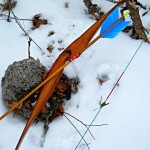
Ultimately, it all depends on application and personal preference. The most important thing to remember is to choose your targets carefully, be safe, and have fun!
Disclaimer: Most states require a small game permit to be in the woods with your bow and you may need to wear hunter orange while you’re at it. Research your regulations and do not just take someone’s word for it.
Discover more from The HuntFishTravel Show
Subscribe to get the latest posts sent to your email.
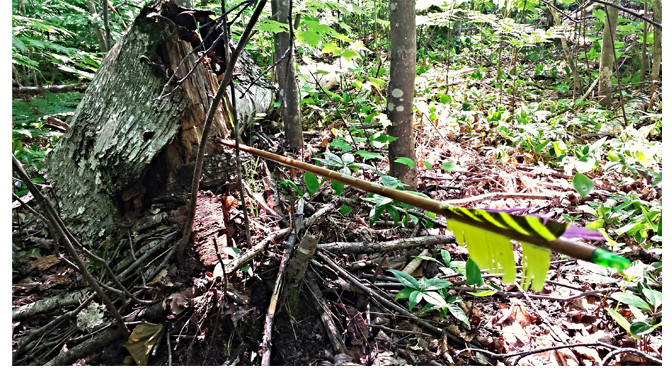

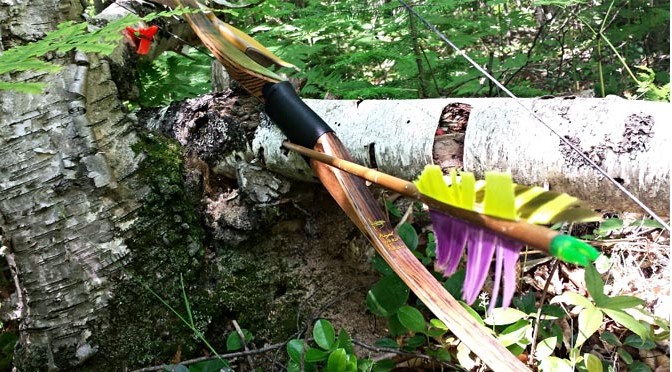

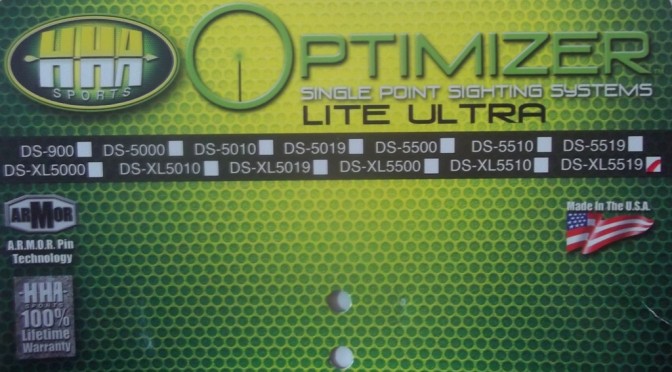
Great series of articles. Thanks!
What I can’t quite figure out is whether the arrow is meant to stick in the stump or just bounce off it (or either?). With some of the tips you recommended they seem like they wouldn’t go through, but bounce off a rotten stump. Any thoughts?
Thanks!
Oh they stick Adam. Believe me. Unless of course the “rotted” stump is actually petrified…then…its not actually rotten. I’ve made this mistake far too many times. Most of the stumps I shoot at are just decaying mounds or humps of moss now. Can’t go wrong with moss!